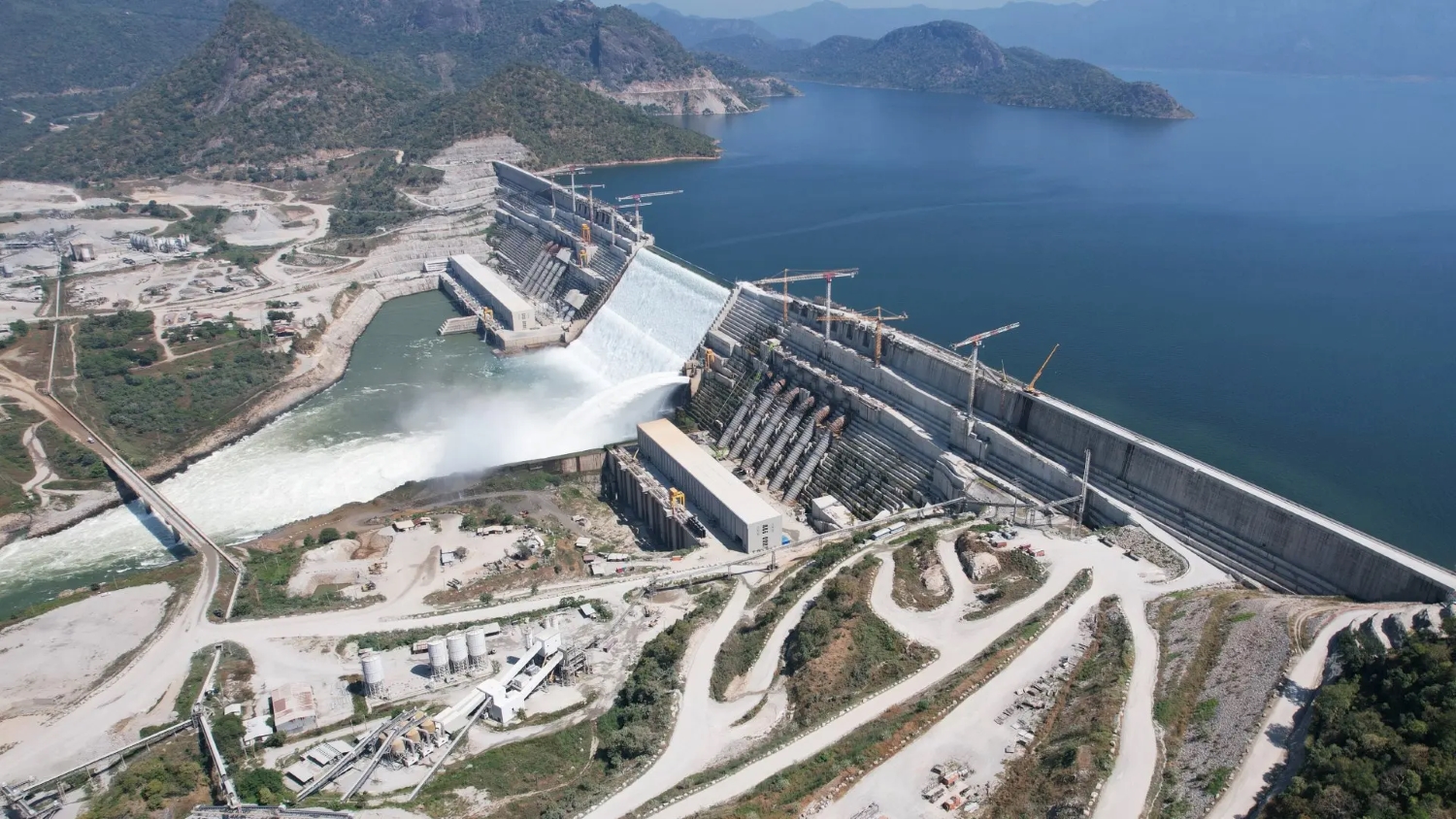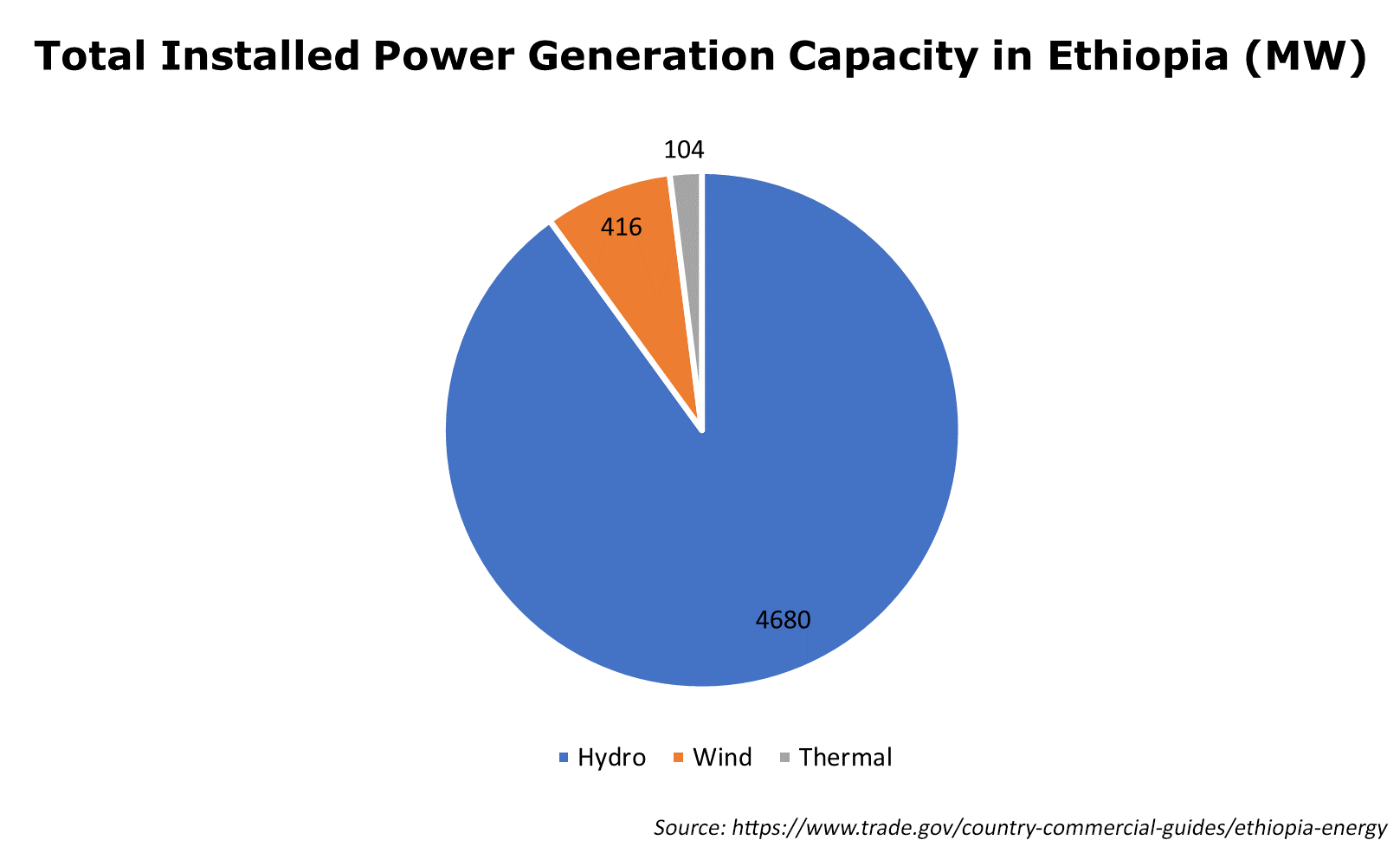Ethiopia doubles electricity generation at a controversial Nile dam
Addis Ababa could become a renewable energy exporter but risks sparking a regional conflict
 Photo source: Webuild
Photo source: Webuild
Ethiopia has more than doubled electricity production at the Grand Ethiopian Renaissance Dam (GERD) following the activation of two additional turbines, each generating 400 MW. These new turbines add to the two previously operational turbines, which produce 375 MW each, bringing the dam's total power generation to 1,550 MW. The US$4.2bn domestically funded GERD, located on the Nile River’s largest tributary, has been a focal point of controversy but is central to Ethiopia’s plan of becoming a regional energy hub.
Electricity generation from Africa's largest hydroelectric project began in February 2022. Construction of the dam started in 2011 and its reservoir, which spans an area the size of Greater London, was filled last year. The dam is expected to eventually generate over 5,000 MW.
 At the start of this year (2024) Ethiopia had an installed generation capacity of 5,200 MW, of which approximately 90% came from hydropower, with the remainder supplied by wind (8%) and thermal (2%) sources. The government has set a target of increasing power generation capacity to 17,000 MW over the next decade. Meanwhile, Ethiopia is also constructing the Koysha hydropower dam on the Omo River, which will have a capacity of 2,160 MW. Ethiopia currently exports electricity to Kenya, Djibouti, and Sudan. In a recent development, the country finalised an agreement to supply 400 MW of electricity to Tanzania. This deal followed Prime Minister Abiy Ahmed’s visit to Tanzania earlier this year, where the agreement was signed with President Samia Suluhu Hassan. Ethiopia earned US$140m from power exports in the previous fiscal year and aims to raise this to US$300m in the current year.
At the start of this year (2024) Ethiopia had an installed generation capacity of 5,200 MW, of which approximately 90% came from hydropower, with the remainder supplied by wind (8%) and thermal (2%) sources. The government has set a target of increasing power generation capacity to 17,000 MW over the next decade. Meanwhile, Ethiopia is also constructing the Koysha hydropower dam on the Omo River, which will have a capacity of 2,160 MW. Ethiopia currently exports electricity to Kenya, Djibouti, and Sudan. In a recent development, the country finalised an agreement to supply 400 MW of electricity to Tanzania. This deal followed Prime Minister Abiy Ahmed’s visit to Tanzania earlier this year, where the agreement was signed with President Samia Suluhu Hassan. Ethiopia earned US$140m from power exports in the previous fiscal year and aims to raise this to US$300m in the current year.
Egypt has voiced strong opposition to the filling of the GERD saying it will affect the livelihood of millions of Egyptians who live along the banks of the Nile downstream. The dam sits on the Blue Nile tributary, which accounts for 85% of the Nile’s water. Egypt, with a population of around 107m, relies on the Nile for nearly all its freshwater. While Egypt has strongly opposed the dam, Sudan’s de facto leader, Abdel Fattah al-Burhan, recently stated that Sudan is “in agreement” with Ethiopia on the project.
References
‘Filling of Grand Renaissance Dam on the Nile complete, Ethiopia says’, Al Jazeera, 10 September 2023
‘Why is Egypt worried about Ethiopia's dam on the Nile?’, BBC, 13 September 2023
‘Ethiopia completes 94% of controversial Renaissance Dam’, Anadolu Ajansı, 05 January 2024
‘Ethiopia - Country Commercial Guide’, The International Trade Administration, 18 January 2024
‘Sudan is "in agreement" with Ethiopia over its Blue Nile dam’, AfricaNews, 13 August 2024
‘GERD contributes 17% to Ethiopia’s power supply, EEP eyes $300m from exports’, Addis Standard, 22 August 2024
‘Ethiopia secures non-concessional loan for Koysha Hydroelectric Dam Project’, Capital, 25 August 2024
‘Ethiopia to begin electricity export to Tanzania in September’, Ethio Negari, 28 August 2024
‘Ethiopian Electric Power generates over $25 million in revenue from data mining companies’, Addis Standard, 28 August 2024
‘Ethiopia says mega-dam doubles electricity output’, News24, 29 August 2024














/enri-thumbnails/careeropportunities1f0caf1c-a12d-479c-be7c-3c04e085c617.tmb-mega-menu.jpg?Culture=en&sfvrsn=d7261e3b_1)

/cradle-thumbnails/research-capabilities1516d0ba63aa44f0b4ee77a8c05263b2.tmb-mega-menu.jpg?Culture=en&sfvrsn=1bc94f8_1)







